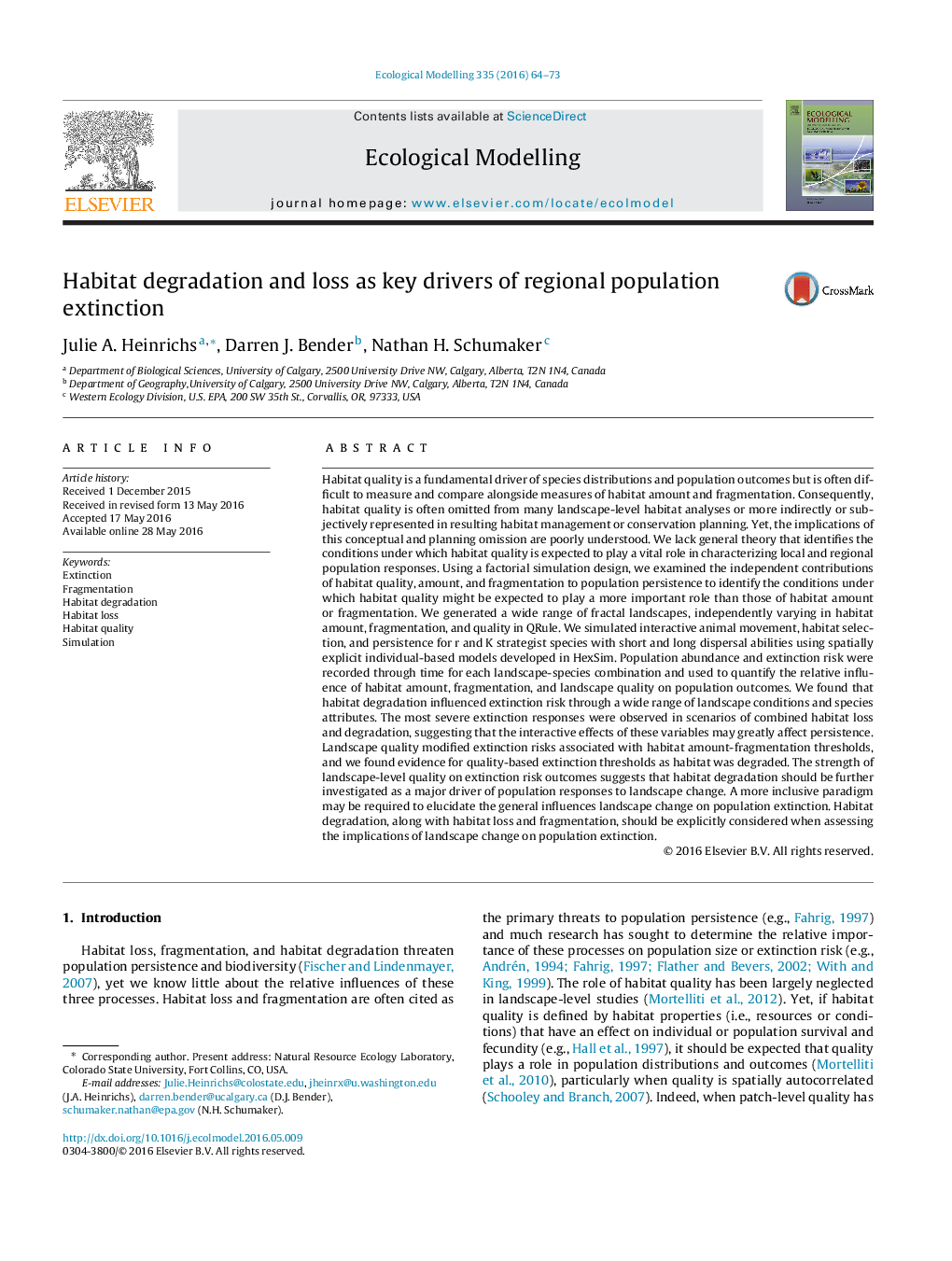| کد مقاله | کد نشریه | سال انتشار | مقاله انگلیسی | نسخه تمام متن |
|---|---|---|---|---|
| 4375541 | 1617412 | 2016 | 10 صفحه PDF | دانلود رایگان |
• Habitat degradation influenced extinction in a wide range of landscapes.
• Habitat composition outweighed configuration effects for all species.
• Landscape quality shifted amount-fragmentation extinction thresholds.
• Quality-induced extinction thresholds emerged in moderate and high degradation.
• Degradation effects should be considered alongside habitat loss and fragmentation.
Habitat quality is a fundamental driver of species distributions and population outcomes but is often difficult to measure and compare alongside measures of habitat amount and fragmentation. Consequently, habitat quality is often omitted from many landscape-level habitat analyses or more indirectly or subjectively represented in resulting habitat management or conservation planning. Yet, the implications of this conceptual and planning omission are poorly understood. We lack general theory that identifies the conditions under which habitat quality is expected to play a vital role in characterizing local and regional population responses. Using a factorial simulation design, we examined the independent contributions of habitat quality, amount, and fragmentation to population persistence to identify the conditions under which habitat quality might be expected to play a more important role than those of habitat amount or fragmentation. We generated a wide range of fractal landscapes, independently varying in habitat amount, fragmentation, and quality in QRule. We simulated interactive animal movement, habitat selection, and persistence for r and K strategist species with short and long dispersal abilities using spatially explicit individual-based models developed in HexSim. Population abundance and extinction risk were recorded through time for each landscape-species combination and used to quantify the relative influence of habitat amount, fragmentation, and landscape quality on population outcomes. We found that habitat degradation influenced extinction risk through a wide range of landscape conditions and species attributes. The most severe extinction responses were observed in scenarios of combined habitat loss and degradation, suggesting that the interactive effects of these variables may greatly affect persistence. Landscape quality modified extinction risks associated with habitat amount-fragmentation thresholds, and we found evidence for quality-based extinction thresholds as habitat was degraded. The strength of landscape-level quality on extinction risk outcomes suggests that habitat degradation should be further investigated as a major driver of population responses to landscape change. A more inclusive paradigm may be required to elucidate the general influences landscape change on population extinction. Habitat degradation, along with habitat loss and fragmentation, should be explicitly considered when assessing the implications of landscape change on population extinction.
Journal: Ecological Modelling - Volume 335, 10 September 2016, Pages 64–73
